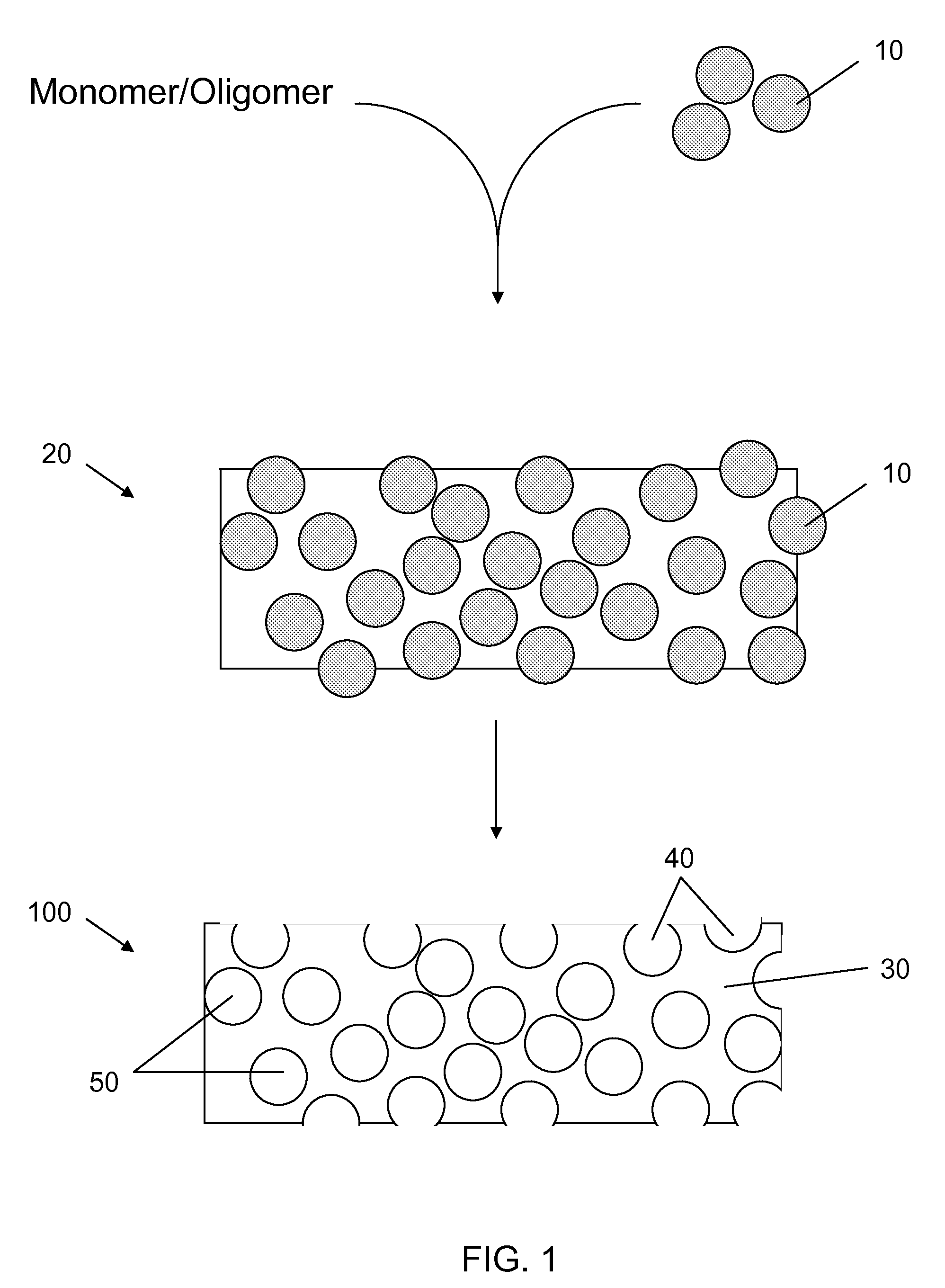Substrate and method for culturing breast cells
- Summary
- Abstract
- Description
- Claims
- Application Information
AI Technical Summary
Benefits of technology
Problems solved by technology
Method used
Image
Examples
example 1
Fabrication of Porous Substrate
[0081]Porous polydimethylsiloxane (PDMS) substrates were generated by mixing a PDMS pre-polymer and a curing agent using the Sylgard 182 kit available from Dow Corning in a ratio of 10 to 1. The mixture was closely packed with sugar crystals of size ranging from 212-250 micrometers, which was then filled in a mold and cured at 100 degrees for one hour. The sugar in the cured polymer was washed out in an ultrasonic bath, forming porous PDMS substrates. The resulting porous PDMS was released from the mold and assembled into multi-well plate for cell culture.
[0082]Depending on the density of wells in the plates, the plates were prepared as follows: (1) for 96-well plate, porous PDMS was molded in a 96-well format on a piece of glass insert, then the insert was released from the mold and glued to the bottom of 96-well holy plate (plate without the bottom) by double-sided pressure sensitive adhesive (PSA) plate; or (2) for plates of density lower than 96 we...
example 2
Culture of Non-malignant Breast Cells on Porous Substrate
[0083]Non-malignant breast cells MCF-10A were seeded in wells having the porous PDMS substrates described in Example 1. 10,000 cells were seeded and cultured in MEBM / F12 cell culture medium with 5% horse serum, 5% pen / strep, 20 ng / ml of hEGF, 0.5 μml of hydrocortisone, 100 ng / ml of Cholera toxin and 10 μg / ml of insulin. The medium was changed on alternate days. Following two week of culture, the cells were stained with Rhodamine phalloidin (F-actin staining) and imaged with confocal fluorescence microscope. The confocal image of MCF-10A, as shown in FIGS. 8A-B (with FIG. 8B being of higher magnification), reveals that MCF-10A formed a structure of organized nuclei and robust cell-cell adhesion. The observed cell morphology closely resembled the in-vivo acini structure of non-malignant mammary epithelial cells. This is in contrast to MCF-10A cells cultured on traditional 2D surfaces, on which the cells form monolayer.
example 3
Culture of Malignant Breast Cells on Porous Substrate
[0084]Malignant breast cells MCF-7 were seeded in wells having the porous PDMS substrates described in Example 1. 10,000 cells were seeded and cultured in EMEM cell culture medium with 10% Fetal Bovine Serum, 5% pen / strep, and 10 μg / ml of insulin. The medium was changed on alternate days. Following two weeks of culture, the cells were stained with Rhodamine phalloidin (F-actin staining) and DAPI nuclei counter stain and imaged with confocal fluorescence microscope as shown in FIG. 9. The image shows that MCF-7 cells formed a mass structure of disorganized nuclei but maintain robust cell-cell adhesion.
PUM
 Login to View More
Login to View More Abstract
Description
Claims
Application Information
 Login to View More
Login to View More - R&D
- Intellectual Property
- Life Sciences
- Materials
- Tech Scout
- Unparalleled Data Quality
- Higher Quality Content
- 60% Fewer Hallucinations
Browse by: Latest US Patents, China's latest patents, Technical Efficacy Thesaurus, Application Domain, Technology Topic, Popular Technical Reports.
© 2025 PatSnap. All rights reserved.Legal|Privacy policy|Modern Slavery Act Transparency Statement|Sitemap|About US| Contact US: help@patsnap.com



